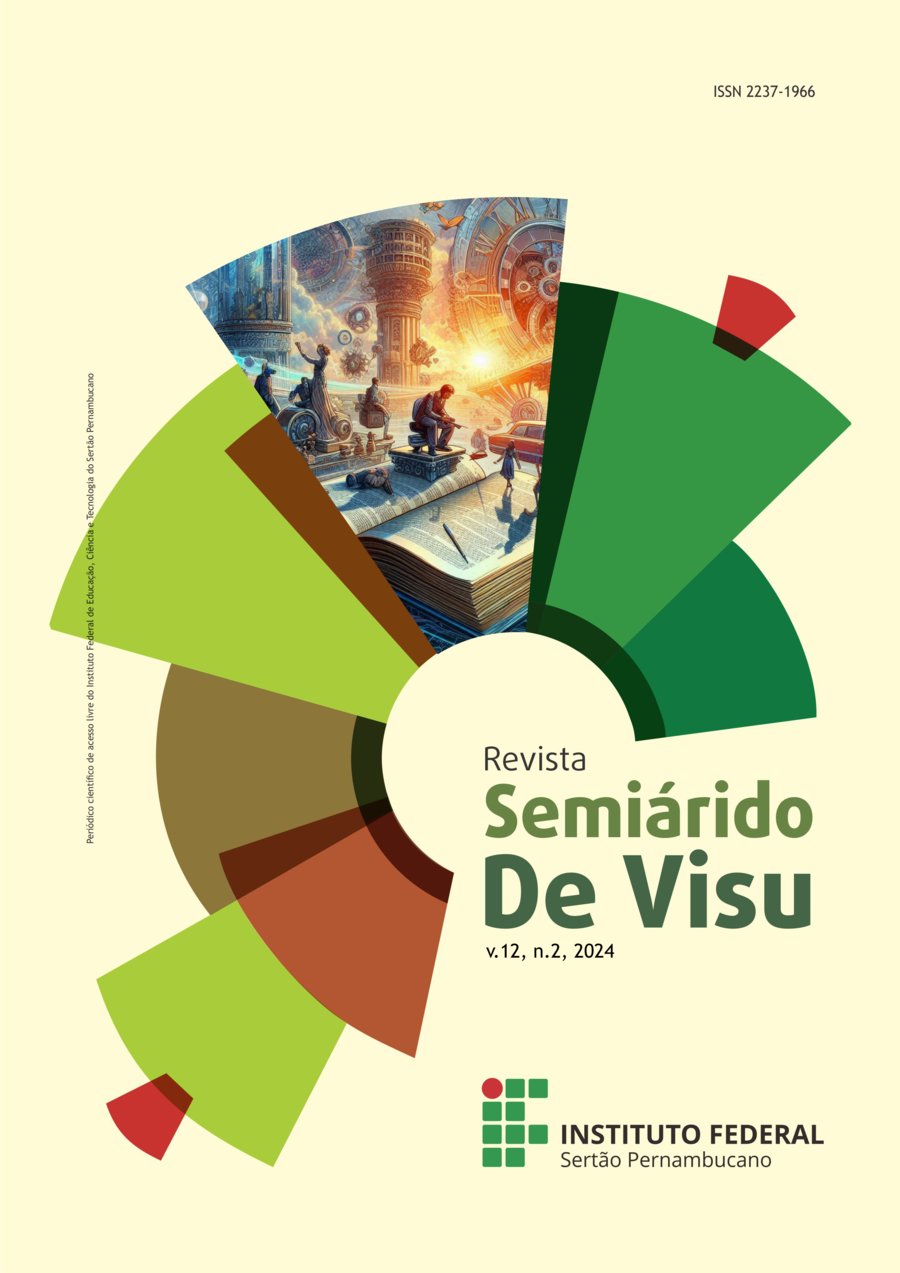Mudança diacrônica e sincrônica dos vocábulos interação e interatividade no texto dicionarístico.
DOI:
https://doi.org/10.31416/rsdv.v12i2.911Palabras clave:
Lexicografia, Dicionário, Verbete, AcepçãoResumen
Resumo: Sendo um fenômeno sujeito às tranformações sociais e às relações humanas instituídas na/pela sociedade, a língua vivencia uma ação contínua de modificação, que não encontra total correspondência, nem tempestividade no ato do registro em dicionários. Nesse escopo, o presente artigo busca verificar a mudança diacrônica e sincrônica dos vocábulos interação e interatividade no texto dicionarístico. O fundamento para esta pesquisa se localiza nos estudos da semântica histórica e lexical que abordam a perspectiva diacrônica/ sincrônica no âmbito da lexicografia. Metodologicamente, o processo de dicionarização dos termos mencionados foi o ponto de partida da investigação, para então identificar se ambas as unidades da língua têm a mesma acepção. Foram utilizados seis dicionários, cobrindo um período de 1975 a 1999, em contraste com dois outros de 2011. Os resultados apontam que tais vocábulos, embora parecidos na grafia, têm origem do emprego e data de catalogação distintas. Como conclusão, é possível afirmar que os dois são relativamente recentes e que a introdução da palavra interação ocorreu anteriormente à do termo interatividade no dicionário. Além disso, pode-se assegurar que há consenso para a etimologia do verbete interação, mas não há para a palavra interatividade. A realização deste trabalho se justifica em seu propósito de contribuir para os estudos linguísticos inerentes à área da semântica histórico-lexical, tornando-se fonte para reflexões posteriores acerca dos processos de mudança e variação do idioma.
Citas
ALVES, L. M.; Neologismo: criação lexical. São Paulo: Ática,2004.
AULETE, C.; Novíssimo Dicionário Contemporâneo da Língua Portuguesa. Org. Paulo Geiger. Rio de Janeiro: Lexikon, 2011.
BRASIL. Ministério da Educação e cultura (MEC). Dicionário escolar da língua Portuguesa.Org. Francisco da Silveira Bueno. 5ª ed. São Paulo: Fundação Nacional de Material Escolar (FENAME),1965.
FERREIRA, A.B.H.; Novo dicionário da língua portuguesa. Rio de Janeiro. Nova Fronteira, 1975.
FERREIRA, Aurélio Buarque de Holanda. Novo Dicionário Aurélio da Língua portuguesa. 2 ed. Totalmente rev. e ampl. Rio de Janeiro: Nova Fronteira, 1986.
FERREIRA, A.B.H.; Dicionário Eletrônico Aurélio Século XXI. Rio de Janeiro: Editora Nova Fronteira e Lexikon Informática, 1999. Versão 3.0. 1 CD-ROM.
GARCIA, A.; Semântica Histórica. Soletras, Ano I, n. 02. São Gonçalo: UERJ, jul/dez. 2001.
GIL, A. C.; Como elaborar projetos de pesquisa. 4. ed. São Paulo: Atlas, 2007.
HOUAISS, A.; Dicionário Houaiss da Língua Portuguesa. Rio de. Janeiro, Ed. Objetiva, 2011.
PÊCHEUX, M.; Semântica e discurso: uma crítica à afirmação do óbvio. Campinas: Unicamp, 2014.
PONTES, A. L.; Marcas de uso em dicionários escolares brasileiros. Disponível em: http://www.letras.ufmg.br/padrao_cms/documentos/eventos/gtlex/viiiengtlex/resumos_expandidos/Ant%C3%B4nio%20Luciano%20Pontes.pdf Acesso em: 26/11/2019.
SILVA, M.; Sala de aula interativa. Rio de Janeiro,RJ: Quartet, 2000.
WELKER, Herbert Andreas. Dicionários – uma pequena introdução à lexicografia / 2. ed. revista e ampliada – Brasília: Thesaurus, 2004.
Descargas
Publicado
Cómo citar
Número
Sección
Licencia
Derechos de autor 2024 Revista Semiárido De Visu

Esta obra está bajo una licencia internacional Creative Commons Atribución 4.0.















